The Haunting History of ‘Frozen Charlotte’ Dolls
They were baked into cakes and dropped into baths.
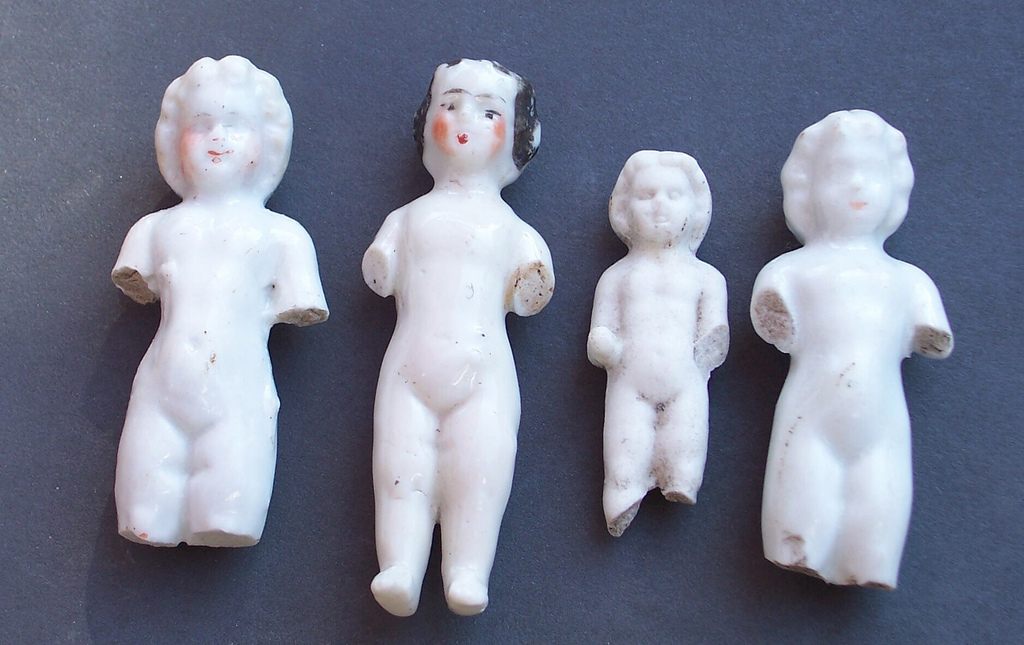
They abound on Etsy and eBay: Tiny dolls, usually with dark-painted hair and red lips, and skin as white as snow. Made of white bisque, a type of porcelain, they lie frozen in place without any joints. During the Victorian era in the United States, these little dolls were baked into cakes, associated with a famous dessert, and sought after by young girls, just as they are sought after by collectors today. But it wasn’t a little girl that gave the doll her name: Frozen Charlotte.
The doll’s origins—as a German bath-time novelty, meant to float in a tub—were innocent, but its arrival in the United States, in the mid 1800s, coincided with the popularity of a morbid song. The story goes that Maine writer Seba Smith stumbled upon a newspaper story that recounted how a young woman froze to death in her carriage on the way to a ball. Hit with inspiration, Smith, who is also known as the first to record the word scrumptious, scribbled a poem on the theme. Published in 1843, A Corpse Going to a Ball described how on a frosty night, a young lady named Charlotte refused to wear a blanket over her fine clothes. When they arrived, her more-bundled-up beau found her frozen to death in the sleigh.
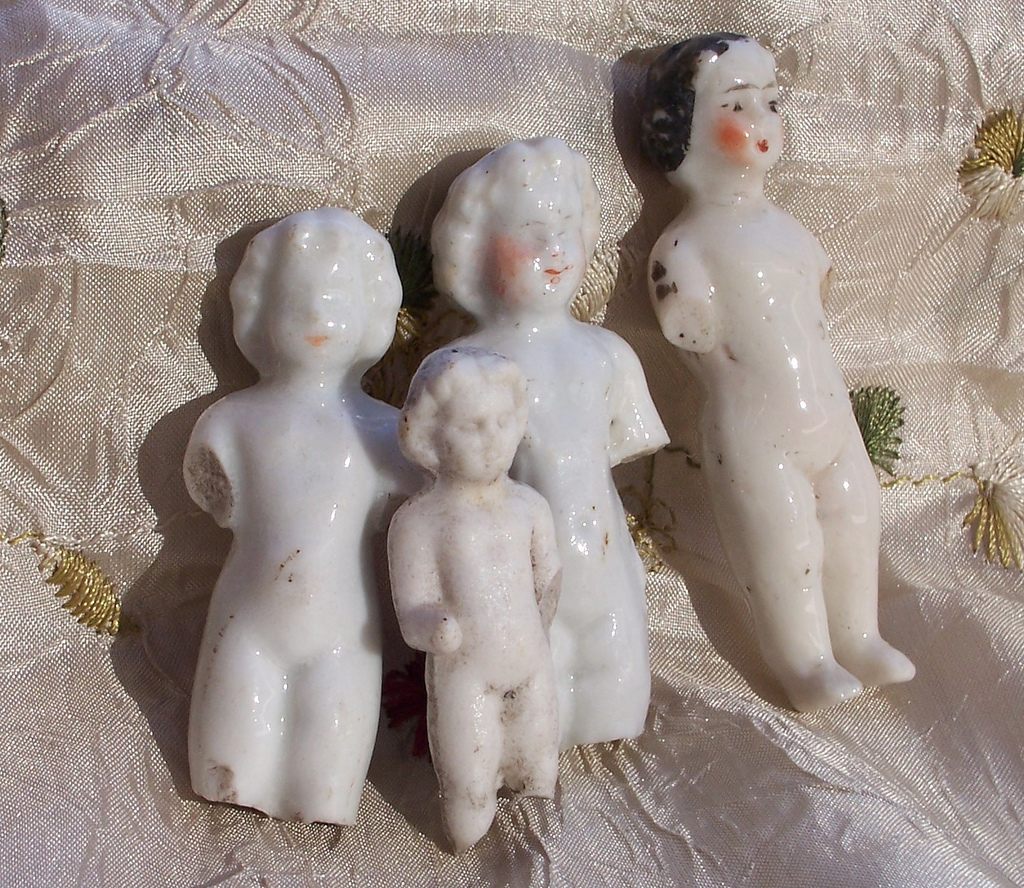
The poem was a hit, as it touched on the dangers of vanity and not listening to your parents. Set to music, it became a popular ballad. When Americans first saw the hard, white bisque dolls, the association with the unfortunate Charlotte must have seemed obvious. They began referring to them as Frozen Charlottes. Sometimes sold for as little as a penny, Frozen Charlottes (and the occasional male Charlie) were made by the million.
The doll’s small shape made it ideal for another purpose. Hiding coins or figurines in cakes is a tradition with ancient roots. A tiny doll in a Mardi Gras king cake, for example, is meant to bring prosperity to the finder (or to decide who will provide next year’s cake. ) While a baby figurine is usually placed inside cakes, the small, inexpensive Frozen Charlotte was also well suited for the purpose.

The dolls were sold well into the 20th century, and surviving examples are easy to find online. But there’s another way to enjoy the doll’s culinary legacy, because Frozen Charlotte also took on another association. During the doll’s heyday, the ladyfinger-and-Bavarian cream dessert Charlotte Russe was also popular. Gradually, a frozen version of the dessert came to be called, of course, “Frozen Charlotte”: an appropriately sweet, if chilly, name.
Gastro Obscura covers the world’s most wondrous food and drink.
Sign up for our email, delivered twice a week.







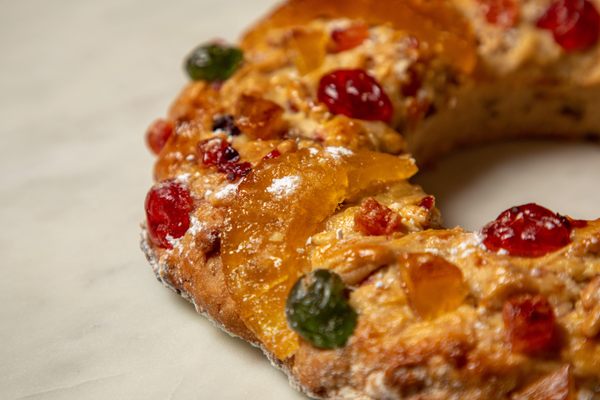


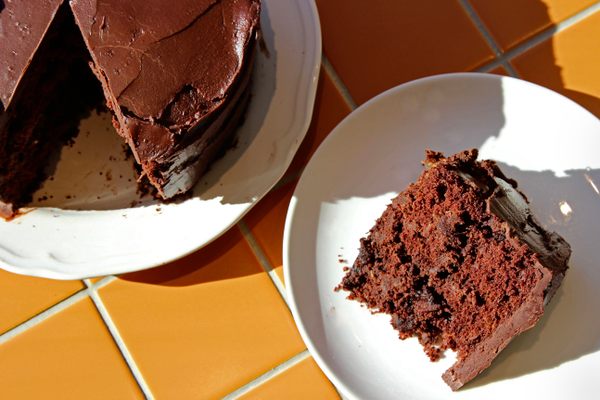



















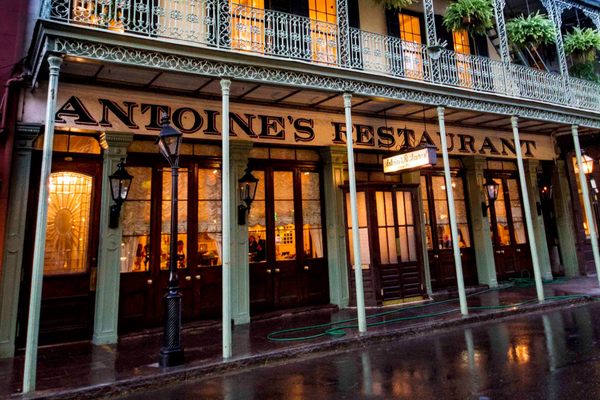



Follow us on Twitter to get the latest on the world's hidden wonders.
Like us on Facebook to get the latest on the world's hidden wonders.
Follow us on Twitter Like us on Facebook